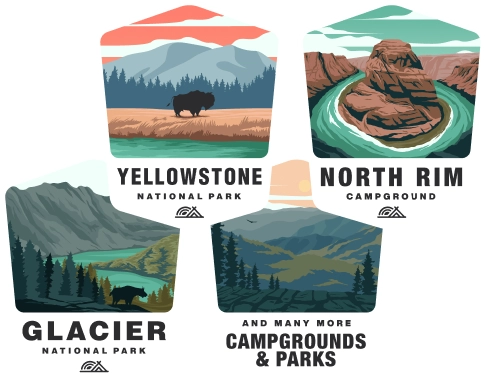Camping at Tongass National Forest
Introduction
Tongass National Forest is a temperate rainforest located in Southeast Alaska, covering approximately 16.7 million acres. It's the largest national forest in the United States and is home to a diverse range of wildlife, lush greenery, and breathtaking landscapes. The forest includes parts of the Inside Passage, which is popular among tourists and features a chain of islands with abundant recreational opportunities.
Camping Regulations and Permits
Permit Requirements:
- Generally, camping in the Tongass National Forest does not require a permit. However, certain specialized areas or cabins may require reservations and fees.
- The United States Forest Service (USFS) operates public use cabins which can be reserved online through their reservation system.
Camping Limits:
- There are usually limits on the number of consecutive nights you can camp in one location, typically 14 days. After this, you must move at least a mile away if you wish to continue camping.
Leave No Trace:
- Campers are expected to follow Leave No Trace principles to minimize their impact on the environment. This includes packing out all trash, camping on durable surfaces, and respecting wildlife.
Types of Camping Available
Developed Campgrounds:
- The forest offers several developed campgrounds with amenities like picnic tables, fire pits, and outhouses.
Backcountry Camping:
- For a more secluded experience, backcountry camping is an option. It requires campers to be self-sufficient and aware of their impact on the environment.
Cabin Rentals:
- The USFS maintains a number of rustic cabins that can be rented for a more comfortable experience. Bookings are necessary, especially during peak seasons.
Weather and Climate
- Southeast Alaska has a maritime climate, which means wet and mild conditions. Rain gear is essential.
- Summer temperatures range from 50°F to 70°F, while winter temperatures can drop below freezing.
- Prepare for variable conditions and always have waterproof clothing and gear.
Wildlife Precautions
- The forest is home to bears, so proper food storage is imperative. Use bear-resistant food containers and dispose of waste appropriately.
- Maintain a safe distance from all wildlife and do not feed animals.
Seasonal Considerations
- High tourist season is during the summer months of June through August when weather conditions are generally more favorable.
- Some facilities may be closed or have reduced services during the off-season (late fall through spring).
Outdoor Activities
- Tongass National Forest offers a variety of outdoor activities, including hiking, wildlife viewing, fishing, kayaking, and boating.
- There are extensive trail systems for visitors to explore the diverse ecosystems within the forest.
Safety Tips
- Always let someone know your plans and when you expect to return.
- Carry navigation aids, like a map and compass, and know how to use them.
- Be prepared for emergencies with a first aid kit and knowledge of basic first aid.
- Check local weather forecasts and be prepared for rapid changes in weather conditions.
Responsible Recreation
- Respect cultural heritage sites and artifacts; it is illegal to remove historical objects.
- Check for local fire regulations before lighting a campfire and follow fire safety practices.
- Be considerate of other visitors to ensure everyone can enjoy their wilderness experience.
Important Contact Information
- Ensure you have contact information for the local USFS Ranger District office for the area of Tongass you plan to visit.
- In case of an emergency, have the local search and rescue contact information and know the closest location to obtain medical assistance.
Conclusion
Camping in Tongass National Forest can be a remarkable experience but requires preparation and respect for nature and local regulations. Always plan ahead, stay informed about current conditions, and be ready for the dynamic Alaskan wilderness.

